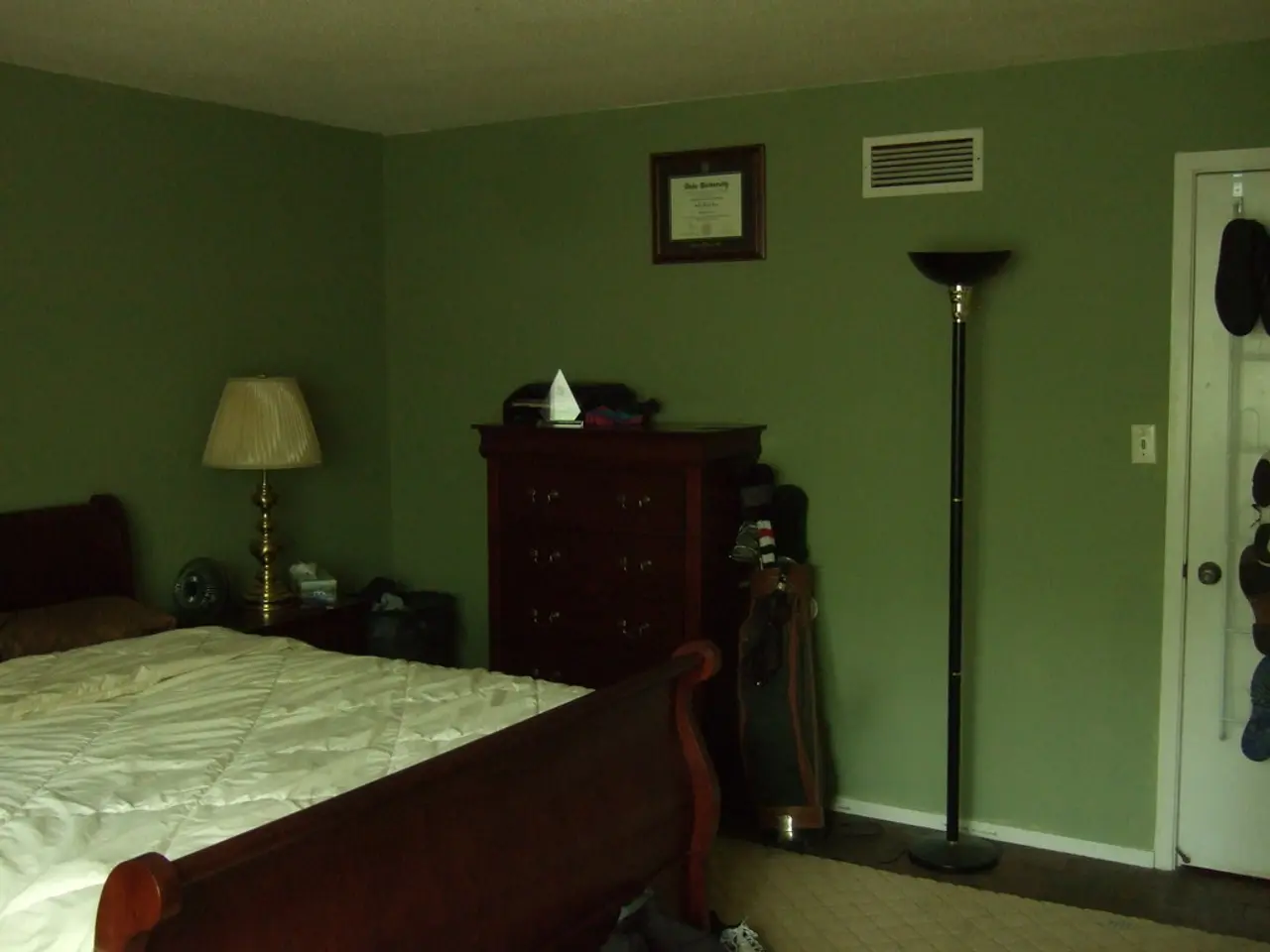"Altering a residence needn't always involve extending it outwardly; instead, consider these 7 alternative strategies, advise specialists"
In the quest for a more spacious living environment, extending outwards isn't always the only solution. Here are some creative ways to increase the size of your home without encroaching on your garden or outdoor space.
Loft Conversions: Transforming your loft into functional rooms like bedrooms, home offices, or dens is a popular choice. This often requires ensuring sufficient headroom, floor strengthening, and adding a staircase for access. Loft conversions can add considerable living space and value without changing the home's footprint [2].
Garage Conversions: Repurposing your garage into a new living space, such as a workshop, home office, gym, guest suite, or storage for hobbies and outdoor gear, is another effective method. A garage conversion creatively makes use of underutilized space, maintaining the home’s external dimensions while expanding usable interior space [2][3].
Reconfiguring Existing Space: Rearranging room layouts and optimizing underused areas can create more functionality. Examples include dividing large rooms into smaller spaces, stealing space from wide corridors or circulation areas, and converting closets or under-stairs space into usable rooms or storage [2].
Additional ideas include conservatories, orangeries, and side-return extensions, which involve some external work but reclaim previously unused narrow garden or side spaces, blending indoors and outdoors to feel more spacious without major outward expansion [1]. Infill extensions use awkward or shaded spaces within the existing footprint creatively to add light and useful space without significant outward bulk [4].
Internal improvements like styling and layout enhancements, such as using large windows, glass roofs, and open-plan concepts, can also improve the perception of space [1][5]. For instance, window seats in landings and hallways with windows can double up to offer handy storage.
Creating an additional room by stealing space from existing rooms is possible, particularly by taking a small section from two adjoining rooms to create a new ensuite. Underutilised spaces within the home, such as those that often turn into the dumping ground, can be reconfigured to create additional space without compromising the room.
It's important to note that building regulations will likely be required for these projects, and a structural engineer may be needed if walls are being taken away. These can result in hidden home improvement costs [6]. In many instances, garage conversions do not require planning permission, but it's always important to check with the government planning office to be sure [7].
In summary, loft and garage conversions combined with thoughtful interior reconfiguration are the most direct and effective ways to increase home size without physically expanding the footprint outdoors [2][3]. Infill and side-return solutions blur the line by making use of marginal external spaces with minimal outward projection [1][4].
References:
[1] RIBA (Royal Institute of British Architects). (2021). Side return extensions: The ultimate guide. Retrieved from https://www.architecture.com/advice-and-inspiration/your-home/side-return-extensions-the-ultimate-guide
[2] Homebuilding & Renovating. (2021). Loft conversions: A complete guide. Retrieved from https://www.homebuilding.co.uk/self-build-and-renovation-news/loft-conversions-a-complete-guide-17499
[3] Houzz. (2021). Garage conversions: A complete guide. Retrieved from https://www.houzz.co.uk/ideabooks/108142417/list/garage-conversions-a-complete-guide
[4] Homebuilding & Renovating. (2021). Infill extensions: A complete guide. Retrieved from https://www.homebuilding.co.uk/self-build-and-renovation-news/infill-extensions-a-complete-guide-17498
[5] RIBA (Royal Institute of British Architects). (2021). Open-plan living: The ultimate guide. Retrieved from https://www.architecture.com/advice-and-inspiration/your-home/open-plan-living-the-ultimate-guide
[6] MoneySavingExpert. (2021). Home improvements: How to avoid hidden costs. Retrieved from https://www.moneysavingexpert.com/news/2019/05/home-improvements-how-to-avoid-hidden-costs/
[7] Planning Portal. (2021). Garage conversions: Permitted development rights. Retrieved from https://www.planningportal.gov.uk/info/200130/common_projects/123/garage_conversions/1
- A well-designed loft conversion can be transformed into a cozy bedroom, home office, or den, adding new functional spaces and value to the home without expanding its footprint.
- By repurposing a garage, one can create a workshop, home office, gym, guest suite, or storage for hobbies and outdoor gear, thereby making efficient use of underutilized space.
- Reconfiguring existing spaces in the home, such as rearranging room layouts or converting closets or under-stairs space, can optimize underused areas and create more functionality within the home.
- Incorporating beauty into the home-and-garden lifestyle can be achieved by using large windows, glass roofs, and open-plan concepts to improve the perception of space, increasing the sense of wellness and family-friendly living.




